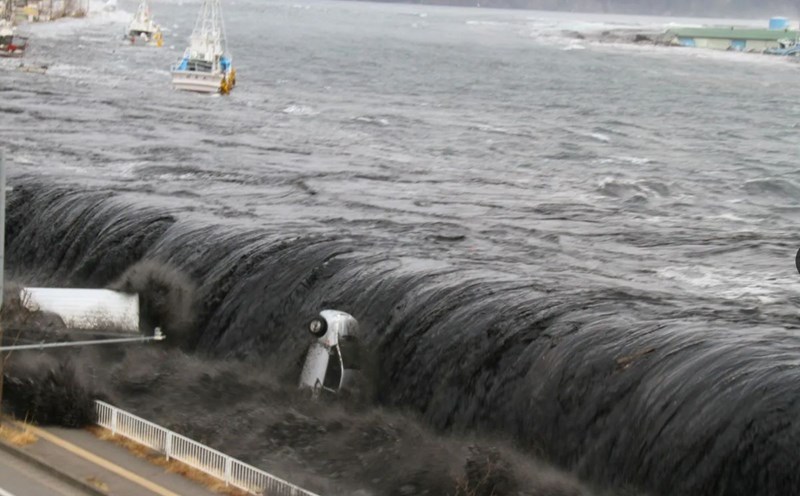At 5:26 p.m. on July 2, local time, a 5.5-magnitude earthquake occurred off the Tokara Islands in southern Japan. According to the Japan Meteorological Agency (JMA), the earthquake caused a severe shake in Toshima village ( Kagoshima prefecture), with the earthquake intensity reaching level 5 on Japan's 7-level scale. Some other areas also recorded vibrations of level 3 or higher.
This was not a single earthquake. Since June 21, the Tokara archipelago has been hit by 877 earthquakes, most of which were of a scale of 1.1 richter or more. Local residents were confused as the earthquakes continued day and night, pushing up vigilance levels.
Geologists are paying special attention to the possibility that the current series of earthquakes are a warning sign of a "super earthquake" in the Nankai trough - one of the world's most dangerous areas for earthquakes and sunslides.
According to the Japanese government's estimate, there is an 82% chance of a major earthquake in the Nankai drain in the next 30 years, with the worst scenario being more than 300,000 deaths.
The Nankai trough is where the seepage process between the Philippine Sea and the Asian plate occurs - an ideal geological condition for producing extremely strong earthquakes.
History shows that in the past 1,400 years, this area has experienced many major earthquakes in the cycle of 100-200 years. The last major earthquake here was in 1946, causing serious damage.

Although there has been a response plan since 2014, the Japanese government said the current measures have only reduced the number of potential deaths by 20%, while the initial target was 80%.
In the face of the new situation, a reform plan was approved on July 1, focusing on building more Tsunami barriers, shelters, and increasing the scale of disaster response drills.
Prime Minister Shigeru Ishiba called for "all people to unite" to deal with the risk of super earthquakes. We cannot stop nature, but we can minimize damage if we prepare carefully and take timely action, he said.
While people have not yet had time to calm down after consecutive earthquakes, Japanese social networks are stirred up by the return of the old comic book series "The Future I See" by author Ryo Tatsuki. In the story, a prediction that was published decades ago has been dug up by netizens, with the content predicting serious disasters will occur from July 5 to 7.
Although denied by scientists, this "prophecy" has caused confusion, especially among foreign tourists. According to the latest data, the number of Hong Kong (China) tourists to Japan in May decreased by 11.2% compared to the same period last year.
In response to the growing concern, JMA Director Ryoichi Nomura had to speak up to confirm: With current technology, there is no way to predict the exact time of the earthquake. He called on people to always be well prepared, but not panic because of false information on the internet.
We will continue to closely monitor seismic activity in the Tokara area and Nankai ditch. People need to trust official information, avoid sharing or spreading unverified information" - he said.











